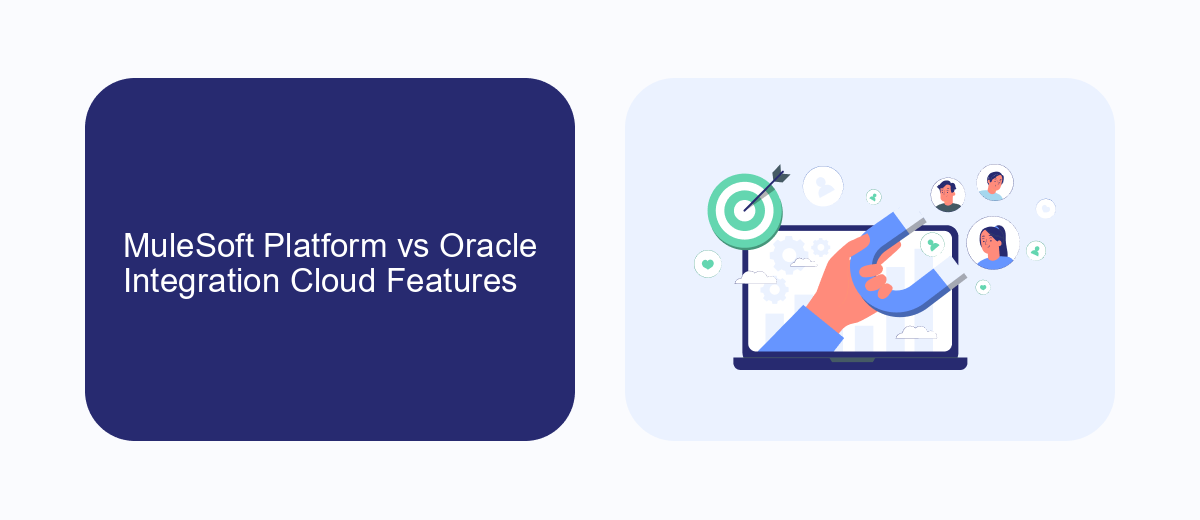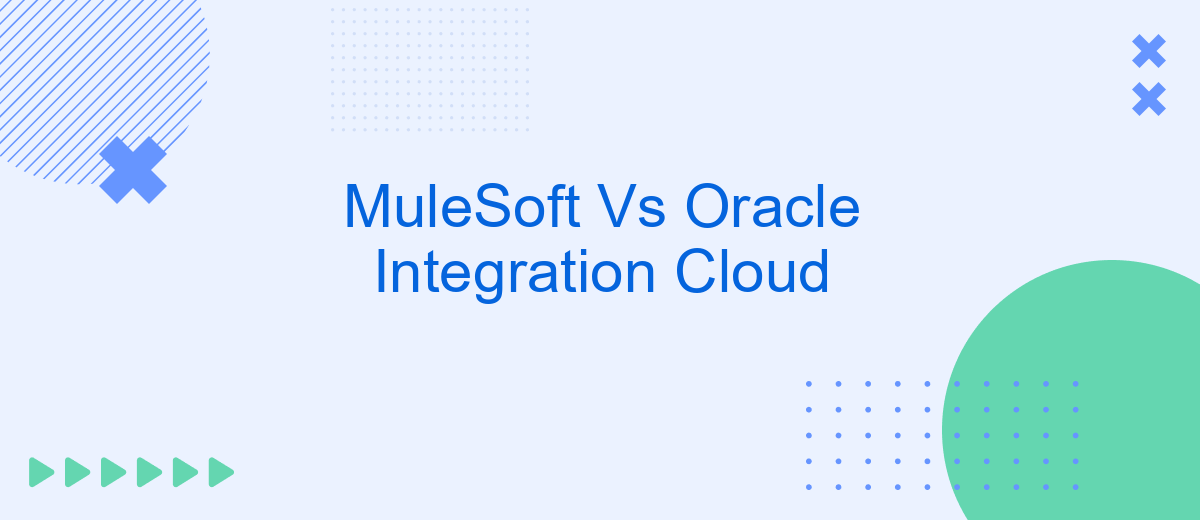In today's fast-paced digital landscape, businesses require robust integration solutions to streamline operations and enhance productivity. Two prominent players in this domain are MuleSoft and Oracle Integration Cloud. This article delves into a comparative analysis of these platforms, exploring their features, capabilities, and suitability for various business needs. Understanding their differences can help organizations make informed decisions for their integration strategies.
Introduction
In today's digital landscape, businesses are increasingly reliant on robust integration platforms to connect disparate systems and streamline operations. Two leading solutions in this space are MuleSoft and Oracle Integration Cloud. Both platforms offer comprehensive tools to facilitate seamless data flow and application integration, but they cater to different business needs and technical requirements.
- MuleSoft: Known for its flexibility and extensive API management capabilities.
- Oracle Integration Cloud: Offers a user-friendly interface and strong pre-built integrations for Oracle applications.
Choosing the right integration platform is crucial for ensuring efficient workflows and data consistency across your organization. Platforms like SaveMyLeads can further simplify the integration process by automating data transfer between various applications, allowing businesses to focus on growth and innovation. In this article, we will compare MuleSoft and Oracle Integration Cloud to help you determine which solution best fits your business needs.
MuleSoft Platform vs Oracle Integration Cloud Features

MuleSoft's Anypoint Platform and Oracle Integration Cloud (OIC) both offer robust tools for enterprise integration, but they cater to different needs and preferences. MuleSoft's platform excels in providing a unified solution for API management, design, and implementation. It offers a rich set of connectors and pre-built templates that simplify the integration process. Additionally, MuleSoft's Anypoint Exchange allows users to share and reuse APIs, connectors, and other integration assets, fostering a collaborative environment. Its strong focus on API-led connectivity makes it a preferred choice for businesses looking to streamline their digital transformation efforts.
On the other hand, Oracle Integration Cloud provides a comprehensive suite of integration tools that are deeply embedded within the Oracle ecosystem. It offers pre-built adapters for Oracle applications and other third-party services, making it easier for organizations already using Oracle products to integrate seamlessly. OIC also features advanced capabilities like machine learning-based recommendations and visual application development, which simplify the integration process. For businesses looking to automate their lead management and marketing workflows, services like SaveMyLeads can complement these platforms by providing easy-to-use integrations with various CRM and marketing tools, enhancing overall operational efficiency.
Pricing

When comparing MuleSoft and Oracle Integration Cloud, pricing becomes a crucial factor to consider. Both platforms offer a range of pricing models to cater to different business needs, but they differ significantly in their approach and cost structures.
- MuleSoft offers a subscription-based pricing model, which is typically divided into three tiers: Gold, Platinum, and Titanium. Each tier provides different levels of access to features and support.
- Oracle Integration Cloud also follows a subscription model but is more flexible with its pay-as-you-go options. This allows businesses to scale their expenses based on actual usage, making it a more adaptable solution for varying workloads.
- Additional costs may incur for both platforms if you need advanced features, premium support, or additional connectors. SaveMyLeads, a service that helps automate integrations, can be a cost-effective alternative for businesses looking to streamline their integration processes without heavy investment.
Ultimately, the choice between MuleSoft and Oracle Integration Cloud will depend on your specific business needs, budget, and the level of flexibility you require. Evaluating the pricing models and understanding the full scope of costs involved will help you make an informed decision.
Pros and Cons

MuleSoft and Oracle Integration Cloud are two powerful tools for enterprise integration, each with its own set of advantages and drawbacks. MuleSoft is known for its flexibility and extensive connector library, making it a popular choice for complex integration scenarios. On the other hand, Oracle Integration Cloud offers seamless integration within the Oracle ecosystem, providing a more streamlined experience for Oracle users.
When considering which platform to choose, it's essential to weigh the pros and cons of each solution. Both platforms offer robust capabilities, but their suitability depends on your specific business needs and existing infrastructure.
- MuleSoft: Highly flexible, extensive connector library, strong community support, but can be complex to set up and manage.
- Oracle Integration Cloud: Seamless integration with Oracle products, user-friendly, strong security features, but limited flexibility outside the Oracle ecosystem.
For businesses looking to simplify their integration processes, services like SaveMyLeads can be invaluable. SaveMyLeads offers an easy-to-use platform for setting up integrations with minimal effort, allowing companies to focus on their core activities rather than technical complexities.
Conclusion
In conclusion, both MuleSoft and Oracle Integration Cloud offer robust solutions for enterprise integration, each with its unique strengths. MuleSoft excels in providing a comprehensive API-led connectivity approach, making it highly suitable for organizations looking for extensive API management and a wide range of connectors. On the other hand, Oracle Integration Cloud stands out with its seamless integration within the Oracle ecosystem, offering pre-built adapters and advanced analytics capabilities that are particularly beneficial for businesses already leveraging Oracle applications.
Choosing between MuleSoft and Oracle Integration Cloud ultimately depends on your specific business needs and existing infrastructure. For those seeking a more straightforward, user-friendly integration experience, services like SaveMyLeads can also be considered. SaveMyLeads simplifies the integration process by offering pre-configured connectors and automated workflows, making it easier to connect various applications without extensive technical knowledge. By carefully evaluating your requirements and the features of each platform, you can make an informed decision that best supports your organization's integration strategy.
- Automate the work with leads from the Facebook advertising account
- Empower with integrations and instant transfer of leads
- Don't spend money on developers or integrators
- Save time by automating routine tasks
FAQ
What are the primary differences between MuleSoft and Oracle Integration Cloud?
Which platform is better for integrating with non-Oracle applications?
How do MuleSoft and Oracle Integration Cloud handle data transformation?
What are the deployment options for MuleSoft and Oracle Integration Cloud?
Are there services available to assist with the implementation and automation of integrations on these platforms?
What do you do with the data you get from Facebook lead forms? Do you send them to the manager, add them to mailing services, transfer them to the CRM system, use them to implement feedback? Automate all of these processes with the SaveMyLeads online connector. Create integrations so that new Facebook leads are automatically transferred to instant messengers, mailing services, task managers and other tools. Save yourself and your company's employees from routine work.

